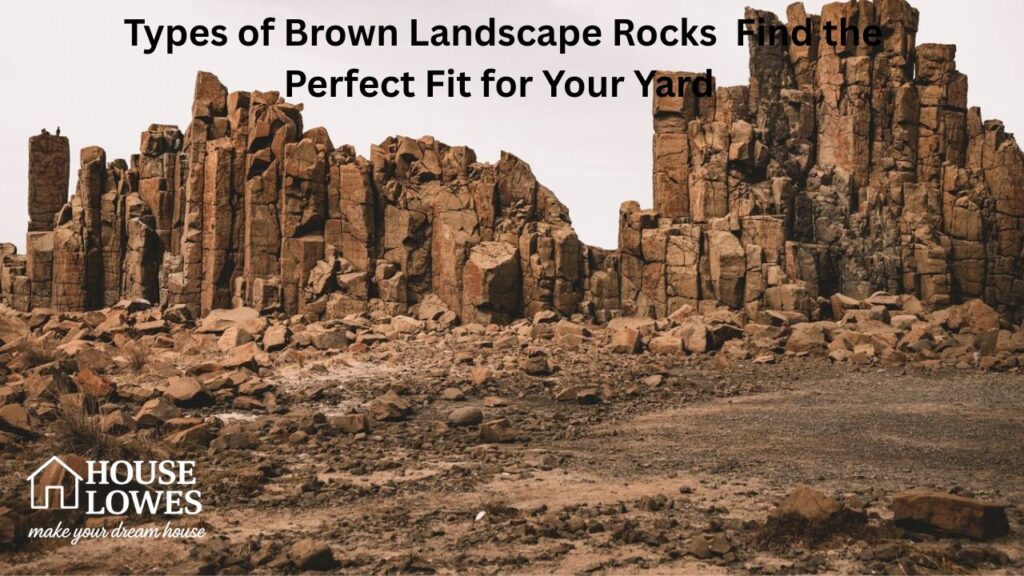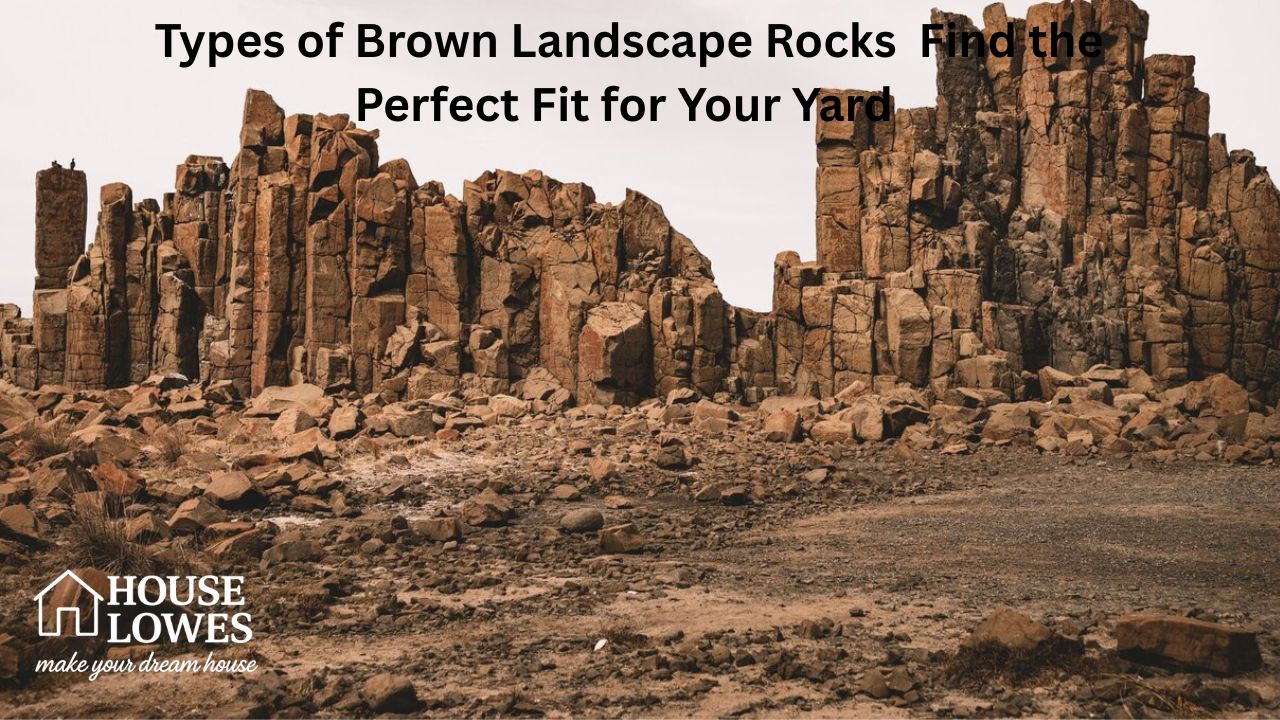When you think about sprucing up your outdoor space, one of the easiest and most impactful changes you can make is to use brown landscape rocks. Yes, those pretty little (or not-so-little!) stones are more than just a way to add rustic charm. They’re about making landscaping functional, beautiful, and downright simple to maintain. But hey, not all rocks are made equal, so let’s break them into types that you’ll love.

1. Decorative Rocks and Their Varieties
River Rocks
Imagine smooth, rounded stones that look like they’ve been polished by nature itself. These lovely brown landscape rocks are like little nuggets of tranquility. River rocks are perfect for creating calming water features, elegant walkways, or for using as ground cover around flowerbeds. Their natural texture and earthy brown tones blend beautifully with plants and flowers.
You’ll commonly see them in sizes ranging from small pebbles to larger stones. Pro tip? Use a mix of sizes for a more dynamic look. They’re also excellent for drainage, so if you have a soggy patch in your yard, these rocks do double duty.
Pebbles and Polished Pebbles
Pebbles are like the mini version of river rocks. They’re smooth, small, and versatile. Polished pebbles, though? Those are the show-offs of the bunch. Their shiny surface reflects sunlight, giving your garden a touch of elegance. Use them in planter beds, inside glass terrariums, or even as a chic topping for indoor plants.
They might be petite, but these guys pack personality and are one of the most popular choices when choosing brown landscape rocks.
Crushed Stone
Now, crushed stone is the rugged, no-nonsense cousin in the rock family. It’s not polished or rounded; it’s bold and angular. This type is perfect for creating sturdy driveways, paths, or even patio bases. Choose from a variety of brown shades to suit your landscaping theme.
What makes crushed stone special is how solid and durable it is for high-traffic areas. Plus, its jagged edges make it lock together like puzzle pieces, meaning it stays put, even when stepped on.
2. Specialty Brown Landscape Rocks
Decomposed Granite
If you’ve never heard of decomposed granite, allow me to introduce your new best friend. This option is ground down so fine that it feels almost like dirt but behaves like rock. Think of it as the smooth operator in landscaping aggregates.
Decomposed granite is ideal for creating driveways, walkways, and seating areas. It’s what you’d see in those relaxed, rustic outdoor patios with sipping-wine-under-a-tree vibes. It provides stability, looks natural, and its earthy tones add warmth to any outdoor setup.
Mexican Beach Pebbles
Now talk about fancy! Mexican beach pebbles are the VIPs of brown landscape rocks. These smooth, polished beauties are typically darker in hue, often with hints of chocolate brown, and are ridiculously elegant. They’re great for high-end landscapes or as a finish around fountains and swimming pools.
But heads up! These rocks can cost a little more. While their price tag might make your wallet sweat, the charm they bring to landscaping is worth every penny.
Cobblestone
Cobblestones are all about classic vibes. Their larger size makes them perfect for edging driveways or as a foundation for little seating nooks. Brown cobblestones add a warm, timeless look to spaces, and their durability makes them a long-term investment for functional beauty.
Lava Rocks
If you’re looking for something that screams drama, brown lava rocks might be your jam. They look a bit rugged and porous and are perfect for retaining moisture in dry areas. While their reddish-brown tones stand out, lava rocks bring both function and flair to modern garden beds.
3. Tailoring Your Rock Choice to Your Needs
Ground Cover Rocks
Sometimes, you just want your backyard to look polished without endless hours of work. Rocks like small pebbles or decomposed granite can serve as natural ground cover. They prevent weed growth and keep the ground cooler for plants.
Accent Stones for Pop
Bored of plain greenery? Accent stones like polished pebbles or cobblestone pathways are your secret weapon for creating focal points. Imagine a walkway lined with Saddleback Brown rocks leading to your garden bench. Sounds dreamy, right?
Proper Drainage Solutions
One often-overlooked use for brown landscape rocks is drainage. Crushed stones or pebbles can help with proper water flow, preventing pools of standing water after rain. Add them near downspouts or low-lying spots in the yard.
FAQ Section
Q1. Can I mix different types of rocks in one garden?
Absolutely! Mixing rocks can make your garden look more dynamic and visually interesting. For instance, try combining river rocks with decomposed granite for varied textures or pair polished pebbles with crushed stones for a balance of elegance and sturdiness.
Q2. What’s the best way to stop weeds when using landscape rocks?
The secret is landscape fabric. Place it under your brown landscape rocks to act as a barrier between soil and rocks. It doesn’t just stop weeds, but it also makes maintenance a breeze.
Q3. Are brown rocks suitable for small gardens?
Definitely! Pebbles or decomposed granite work perfectly in small spaces because they’re versatile and low-maintenance. Plus, their earthy tones help create a cozy and inviting vibe.
Q4. How do I clean brown landscape rocks?
Use a garden hose to spray them down every now and then. If they start looking dull, mild soapy water and a gentle scrub will make them shine again.
Q5. Can I use brown rocks around a fire pit?
Yes! Rocks like lava rocks are heat-resistant and work well around fire pits. Just make sure you’re using the right type for safety reasons.
Choosing the right brown landscape rocks doesn’t have to feel overwhelming. Their versatility, durability, and beauty make them the perfect companion for any outdoor project!







